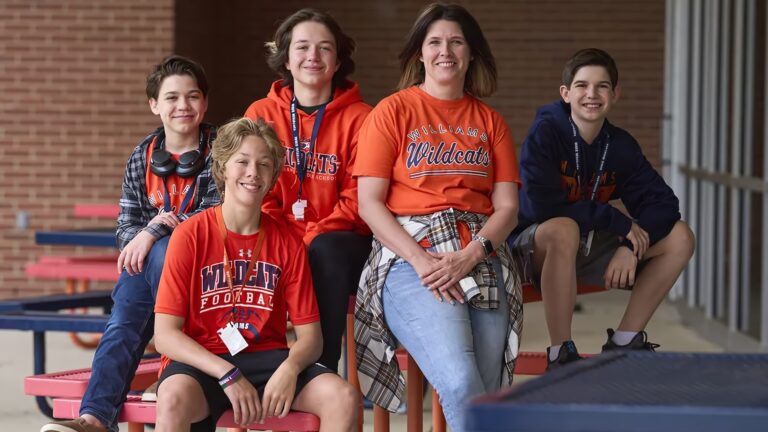2025-05-16: Choices, Preferences, and Predictions
Lesson Procedure:
- 1. Getting Started (Warm-up) (10 minutes):**
- Purpose: Get students talking, activate simple choice-making language.
- Activity: Quick Choice Share
- 1. Write two simple choices on the board/slide, e.g., “Coffee or Tea?”, “Read a book or Watch TV tonight?”.
- 2. Ask students to quickly mingle (or just chat with 1-2 people next to them) and ask their partner the questions, explaining one simple reason for their choice (e.g., “Coffee? Why?”).
- 3. After a few minutes, briefly bring the class back together and ask a couple of students to share something their partner chose and why. (E.g., “Sakura-san, what did Kenji-san choose, coffee or tea? Why?”).
- CCQs: “Are you choosing for yourself or asking your partner?”, “How many reasons should you give?”
- 2. Introducing the Topic & Game (15 minutes):**
- Purpose: Introduce the “Would you rather…?” concept and the game mechanics, introduce target B1 language.
- Activity: Explain and Model “Guess My Choice & Why”
- 1. Briefly review the “Would you rather…?” concept using one simple example question from your list (maybe from “Balanced Dilemma”). Explain that these questions have two options, and there’s no right or wrong answer, just your preference.
- 2. Introduce the “Guess My Choice & Why” game. Explain the steps clearly:
- Step 1: One person (the “Chooser”) takes a question slip but doesn’t show it.
- Step 2: The Chooser reads the question aloud clearly.
- Step 3: The Chooser secretly decides their answer (Option A or B) and one reason why. They write their answer on a small piece of paper, folded.
- Step 4: The other players (the “Guessers”) write down their prediction about the Chooser’s choice AND one reason they think the Chooser picked it.
- Step 5: Each Guesser shares their prediction and reason aloud (e.g., “Keiko-san, I think you would rather [Option A] because [Reason]…”).
- Step 6: The Chooser reveals their secret answer and their actual reason(s).
- Step 7: (Optional) Award points (e.g., 1 point for correct choice, 1 point for correct reason). Rotate the Chooser.
- 3. Distribute the Target Language Handout. Go over the key phrases for stating preference, justification, and prediction. Write them on the board.
- 4. Model one round yourself: Take a question slip, read it, decide secretly, have a volunteer guess (or ask the whole class), reveal your answer and reason. Demonstrate using the target phrases.
- 5. Distribute the Game Instructions Handout (Optional, or just use the slides as a reference).
- 6. Divide students into groups of 3 or 4 (adjust based on final attendance – 8 students would be two groups of 4, or a group of 3 and a group of 5, or two groups of 3 and a pair). Give each group a set of question slips and prediction papers/slips.
- CCQs: “Who reads the question?”, “Should you tell your group your answer before they guess?”, “What should the other people in your group do when they hear the question?”, “Do you need to give a reason for your prediction?”, “Who speaks after everyone guesses?”
- 3. Let’s Talk! (Main Activities) (50 minutes):**
- Purpose: Provide extended practice using target language and game structure to discuss “Would you rather…?” questions.
- Activity: Playing “Guess My Choice & Why”
- 1. Students begin playing the game in their small groups. Remind them to take turns being the “Chooser”.
- 2. Encourage students to use the target phrases from the handout/board.
- 3. Circulate around the room, listening to conversations. Note down language points for later delayed correction, especially focusing on B1-level errors related to the target language, expressing reasons, or more complex sentence structures they attempt. Do not interrupt fluency.
- 4. If a group gets stuck or finishes early, encourage them to draw more questions or perhaps discuss why a certain question was difficult or easy.
- 5. Monitor time closely. Give a 5-minute warning before the activity ends to allow groups to finish their current round.
- CCQs: (Use as needed while circulating or if groups seem confused) “What step are you on?”, “Are you writing your prediction?”, “Is it your turn to be the Chooser?”
- 4. Wrapping Up (Review & Feedback) (15 minutes):
- Purpose: Consolidate learning, address questions, apply error correction, gather feedback.
- Activities:
- 1. Lesson Recap/Sharing Highlights: Bring the class back together. Ask a few students to share:
- “Which question was the most interesting or difficult in your group?”
- “Was anyone’s actual choice very surprising?”
- “Did you guess your partners’ choices correctly often?”
- 2. Error Correction Slot: Go over the language points you noted during the activity. Write correct examples on the board. Focus on common errors related to the target B1 language (e.g., correct use of “would rather,” conjunctions for reasons, prediction structures). Provide positive reinforcement for successful communication.
- 3. Final Q&A: Open the floor for any questions about the lesson, the language, or anything else.
- 4. Exit Ticket: Distribute simple paper questionnaire. Ask students to complete it. (See generated questions below).
- 1. Lesson Recap/Sharing Highlights: Bring the class back together. Ask a few students to share:
Exit Ticket Questions (For Paper Handout):
- 1. What part of today’s lesson did you enjoy the most?
- 2. Was today’s lesson: (Circle one) Too Difficult / Just Right / Too Easy ?
- 3. (Optional) Was the vocabulary/phrases: (Circle one) Too Difficult / Just Right / Too Easy ?
- 4. Any other comments or suggestions for future lessons? (Optional: Write in English or Japanese)







